February 2022

LampizatOr Baltic 3 Hi-Res DAC Review
A new approach to Noval tube design from Poland.
From The Beginning
Founded near Warsaw Poland in 2010, while LampizatOr builds electronics and speakers, many are not aware of those offerings, as it was their exceptional tubed DACs that first put the company on the map. Owned and operated exclusively by its designer Łukasz Fikus, after hearing the disarming $17,250 Golden Gate DAC (Version 2 reviewed here) some seven years ago, then the even more engaging $27,000 Pacific DAC at a show during 2018, the reason for their success became apparent. Both these SET-based devices offered a conspicuous step closer to the undeniable naturalness, organic coherence, and space and dimensionality offered by the very best LP transcription systems.
Łukasz and Lampizator North America principal Fred Ainsley have recently announced the launch of the nearly $50,000 Horizon DAC, which I will get to hear at its official launch during the third Florida Audio Expo in mid-February of this year. While the three previously mentioned devices share a commonality, a circuit foundation based upon Directly Heated Triodes, the remarkable device I’m going to recount for you here, the Baltic 3, has a notably different heritage.
His goal was approximating as closely as possible the enchanting sonic achievements offered by the Golden Gate DAC, but at roughly one-third the cost. Łukasz says that after some ten years of experimentation and prototyping, he arrived at this design, which he considers to be a breakthrough, one embodying all he has learned about digital-to-analog conversion, yet offering exceptional value. He shared with me that with the $6600 LampizatOr Baltic 3, he feels he has pushed Noval tube design circuitry to new limits, representing the pinnacle LampizatOr DAC design based on such “miniatures”.
Mechanical
The faceplate is ~24/64ths inch (10 mm) thick, 17.375 inches (440 mm) wide, and 4.75 inches (120 mm) tall, with a depth of 13 inches (330 mm). The tubes add another 7.875 inches (200 mm) to the standing height, and the whole machine weighs in at nearly 29 pounds (13kg). This DAC offers the widest range of color combinations I am aware of, allowing you to mix and or match colors, selecting different options for the faceplate and the top chassis. Choices for the faceplate include the default charcoal (which I opted for), silver, champagne, black, white, or red, and you may opt to have the top chassis finished in silver, white, red, or at extra cost, you may even select real copper.
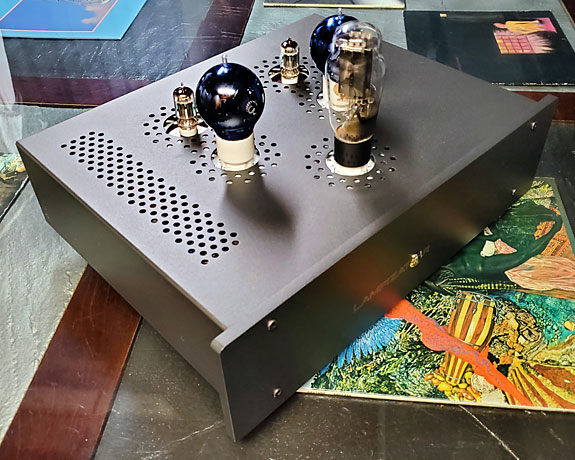
The faceplate is very spartan, with only the laser engraved LampizatOr logo, about two-thirds of the way down from the top, oriented so that the stylized O in the logo is centered, outlining the ring lit pushbutton switch to select the USB input. All other inputs (S/PDIF, TosLink, and AES/EBU) are selected using a switch on the rear panel.
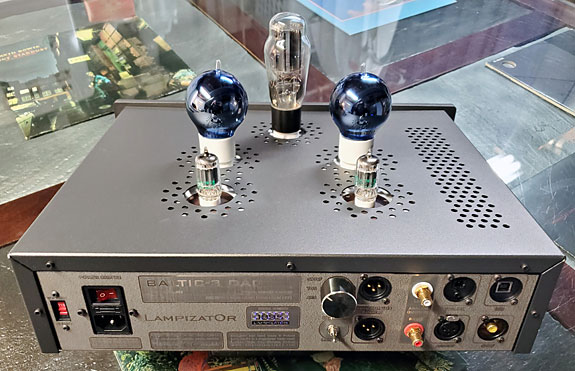
Moving to the rear panel, from right to left we have the AC selector switch (either 115 or 230 V), followed by the power toggle switch, both mounted directly above the IEC mains socket. Next, we see the branding badging, including the serial number, which takes up about the next one-third of the rear panel. We then encounter the input selector knob, immediately above the Hi-Lo gain selector, either 4 or 8.5 V. These are followed by a set of balanced XLR outputs, then the single-ended outputs, each oriented vertically, left above right. Next up, the optical and RF S/PDIF inputs, and finally, the USB and AES/EBU XLR jacks.
The Baltic 3 features truly balanced topology, and incorporates four monophonic channels, with the individual channels devoted to generating each phase of the stereo signal. Incorporating the LampizatOr digital engine #53a, their code name for the Delta-Sigma (∆Σ) based converter (here) it is based upon, because of its proprietary nature, no other details are offered. The design of Delta-Sigma analog-to-digital converters (ADCs) results in an engine that is approximately three-quarters digital and one-quarter analog.
Such converters typically consist of an oversampling modulator followed by a digital/decimation filter working together to produce a high-resolution data-stream output. As well as being their most popular engine, it supports automatic recognition of all sampling rates from 32kHz to 768 kHz, bit rates from 16 to 32 bit, and DSD 64, 128, 256, and 512. However, Apple iOS-based computers will only support up to Quadrate DSD (DSD256) files.
The circuit also includes the Polish-made True Copper Miflex output capacitors, which offer Oxygen-free, non-inductive copper foil designed using a polypropylene dielectric. As well as employing this newly applied tube topology, one that Łukasz claims redefines what is possible using Noval tubes, it also applies a directly heated, dual diode rectified, CLC, (or Pi type) filtered anode power supply. As touched on, it offers four digital inputs, USB, S/PDIF, TOSLINK, and AES/EBU, as well as both single-ended and balanced outputs.
The use of USB data with the Baltic 3 requires the installation of an additional converter module to convert the “packet” data into a steady I2S stream. Using an asynchronous converter, it implements internal RAM, two clocks, as well as its own power supply and power transformer secondary winding. The USB module requires a specific I2S over USB audio driver for Windows, while Linux and MAC iOS (essentially a GUI laid over a UNIX core) will both work without any additional drivers. The Baltic 3 uses the “JL-Lampizator” USB module, and the appropriate Windows driver may be found here.
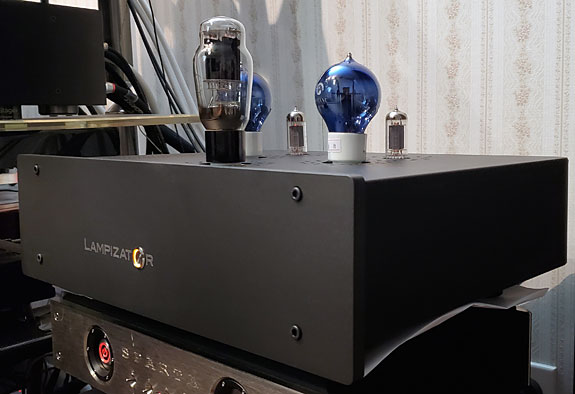
As delivered from the factory, AC to DC conversion for the Baltic 3 is accomplished via a 5C3S (or 5u3C when stenciled in Cyrillic) rectifier, mounted front and center. The stock input front end uses a set of Chinese Psvane 6SN7GT “Blue Balls,” mounted at the one-third points, left to right, on the centerline, front to back. The rear-end output buffers use a set of Russian Electro-Harmonix Gold 12BH7s, again mounted on the one-third points left to right, halfway between the front-end sockets and the rear of the chassis. Interestingly, Łukasz also included a set of rather rare 1953 Soviet Military NOS MELZ 6H8C Metalbase tubes to roll in place of the stock Chinese “Blue Balls,” as well as a set of current production Russian re-issued Mullard 12AU7/ECC82s to roll in place of the stock Russian 12BH7s. More on that soon enough.
Musical
As my biggest complaint about digital playback is its potential to be more tonally “barren” and considerably less dimensionally accurate or representative, what I was hearing with the Baltic 3 had me encouraged with this unpretentious and more affordable LampizatOr offering. Once the unit was in place and had about one hundred hours of run-in, it had become clear that I was being treated to the lion’s share of the naturalness and space that had won me over with both the Golden Gate and Pacific.
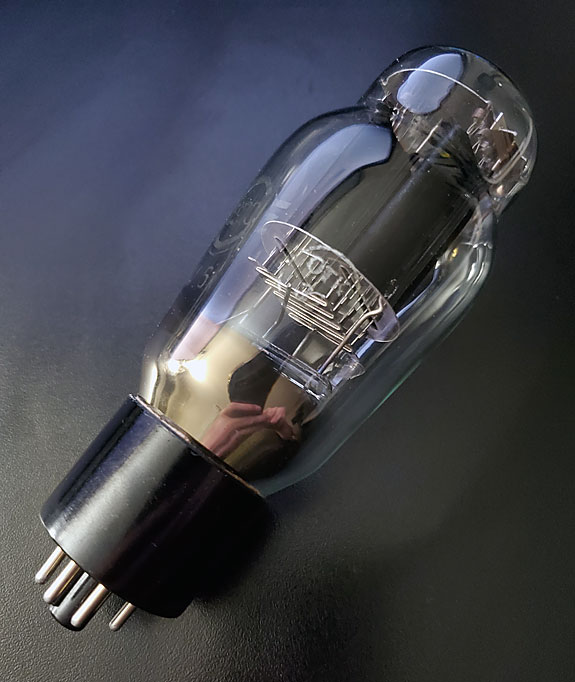
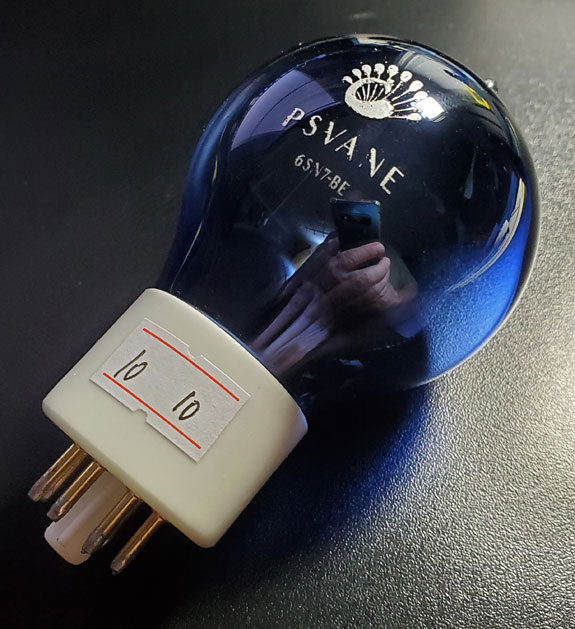
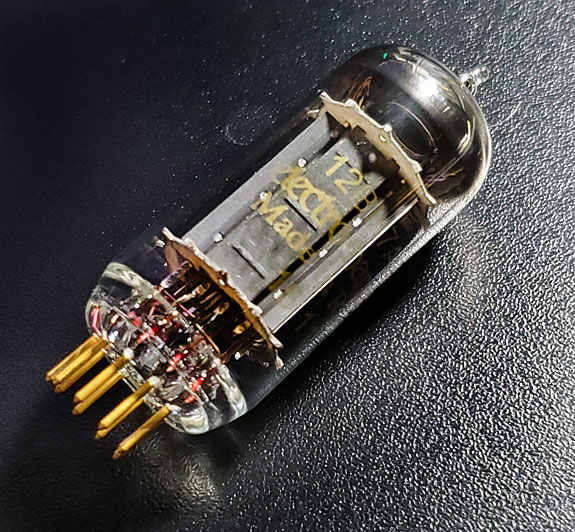
The stock tube set, the 5C3S rectifier, the Psvane 6SN7GT inputs, and the Electro-Harmonix Gold 12BH7 outputs.
When it comes to delivering the deep frequency dive, sub-bass and bass are not only well-extended, they are very fast, tight, and offer remarkably solid and stable pitch definition, especially with DSD and higher sampling rate PCM sources. Listening to bass ample cuts from Qobuz, like “The Hell Hounds of Krim,”” from the 2016 King Crimson release, Live in Vienna, or “Sastanàqqàm,” by Tinariwen, a group of Tuareg musicians from the Sahara Desert region of northern Mali, from their 2017 release, Elwan, you are treated to a sense of the immense power and dynamism of such music. And while it may not quite match the blistering speed and über control offered by some pricier world-class DACs, their Pacific included, it nonetheless delivers exceptional performance for a DAC in such an affordable class.
However, midrange purity, along with tonal color and accuracy are clearly one of this entrant’s biggest gifts to music lovers. Listening to cuts like “Laughing,” from David Crosby’s 2021 50th Anniversary remastered solo release (24-Bit/96kHz), If I Could Only Remember My Name, again from Qobuz, Crosby’s perfectly micro-tuned guitar is lush and liquid, including much of the incredible presence and sustain I am treated to when playing my original US 1971 Atlantic pressing on my analog setup.

Staying with the same track, when listening to the sound of Jerry Garcia’s pedal steel guitar, supported by Phil Lesh’s dulcet bass tones, these guitars are beautifully rendered, laying bare their captured sparkle and inflection for your pleasure. Listening in to the mix, you are permitted to readily identify each distinctive and individual voice, most notably the high harmony vocalizations of Joni Mitchell as the cut winds to a close.
The uppermost registers are clearly and cleanly revealed, well-focused, and detailed, and offer a smoothness free of any notable etched sterility, so long as it is not part of the recording itself. I have been listening to Carlos Santana’s second studio album, Abraxas, since its release weeks before my 15th birthday. Because of my extraordinary familiarity with, and love of, this LP, it has long been a reference for me. While the most remarkable release of this recording is represented by the 2016 Mobile Fidelity Ultra Disc One Step double 45 RPM LP, to compete with that superlative release in the digital domain, I purchased that same recording in the DSD64 format.
Listening to the beguiling chimes from the opening of “Singing Winds, Crying Beasts” from that Abraxas DSD file, I found the uppermost treble reaches ever so slightly remiss of that last level of extension, specificity, and detail. The resultant sonic envelope yields a slightly elusive perception of the air and space “of” and “around” those chimes and other sounds in the uppermost registers, marginally obfuscating the regeneration of the final measure of trailing ambiance and decay.
While presenting with an otherwise striking sense of space and being comparatively open and focused, the Baltic 3 exhibited just a bit of softness in this region. As good as this DAC is in this regard, I could never quite coax that final infusion of shimmer, air, or effortlessness, regardless of any choice of tubes I had at my disposal. The sonic result is that upper treble performance is both a bit warmer overall, and is not quite as incisive and resolute as with something like the MolaMola Tambaqui, or even LampizatOr’s current big guns, the Golden Gate or Pacific.
Somatic
One primary sonic attribute group that favors tubed DACs in general, and LampizatOr models specifically, over the majority of solid-state entrants, are those relating to the rendering of the spatial and dimensional aspects of the sonic tapestry. The typical inabilities of the average DAC in these criteria, especially when compared to the results so commonly bettered by the world of LP playback, have been largely responsible for my stand-off-ish-ness with digital playback.

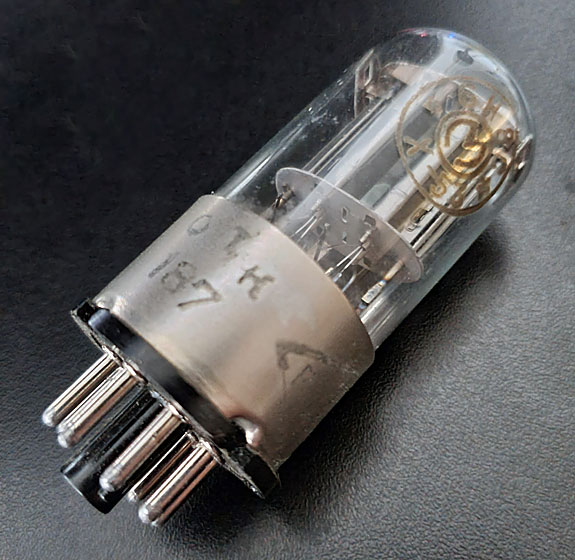
Rolled out with the 1953 Russian NOS MELZ_6H8C inputs and a set of current production Russian re-issued Mullard 12AU7 outputs.
Where this device really makes a statement and clearly presents another of its bona fide gifts, is in those areas that most music lovers living on a digital playback diet are fated to suffer, that of exhibiting comparatively lean tonality and thin dimensionality. This DACs ability to render a focused, three-dimensional, realistically sized soundstage, with lifelike images, conveying a substantial sense of physical bloom and corporeal body is, well, enchanting, especially when rolled out with the NOS MELZ 6H8C Metalbase inputs!
This DAC more readily articulates the individualized voices of separate instruments and quite faithfully communicates their sizes and spatial interrelationships, more truthfully, in a more genuine manner, than any other DAC I’ve heard in its rather competitive class.
Further, its ability to relate both microdynamic immediacy and macrodynamic gradation are especially effective and quite engaging. It offers incredible control at scaling the human voice, in all its myriad subtleties, from recreating a startling QSound whisper of Sting’s voice, off your left shoulder at the very close of “When the Angels Fall,” from The Soul Cages, to reconstructing the chilling and powerful expressiveness as delivered by David Bowie on the opening cut “Cat People (Putting Out Fire),” from the 1982 Giorgio Moroder Cat People movie soundtrack.

Another of its standout capabilities is that it fluently exhibits a persuasively palpable ability to present relevant musical detail, all the while maintaining virtually uncolored and markedly rich tonal color and texture. This exceptional little upstart effortlessly blends its stark tonal neutrality, its remarkably broad and expressive dynamic contrasts (micro and macro), and its firmly resolved low frequencies, with its overachieving ability to preserve the harmonics, timbral purity, fluidity, and dimensionality of a performance.
A Keeper
I am struck by the fact that it offers one of, if not, the most seductive and remarkable representations of dimensionality, body, and bloom I’ve yet to uncover in its class, and even when evaluated against other well-reviewed and respected DACs selling for twice as much or more. This all adds up to make the Baltic 3 both an outstanding performer, and an exceptional value, in today’s highly competitive market. And while I clearly do not need another DAC, I’ve decided to ask LampizatOr to send me a bill. This remarkable little performer isn’t leaving my system anytime soon. Most enthusiastically recommended!
| Tonality | |
| Sub-bass (10Hz – 60Hz) | |
| Mid-bass (80Hz – 200Hz) | |
| Midrange (200Hz – 3,000Hz) | |
| High Frequencies (3,000Hz On Up) | |
| Attack | |
| Decay | |
| Inner Resolution | |
| Soundscape Width Front | |
| Soundscape Width Rear | |
| Soundscape Depth Behind Speakers | |
| Soundscape Extension Into Room | |
| Imaging | |
| Fit And Finish | |
| Self Noise | |
| Emotionally Engaging | |
| Value For The Money |

Check out Enjoy the Music!
See many great reviews by Enjoy the Music.com at this link.
Specifications
Type: High resolution digital audio converter
File capabilities: PCM up to 384 kHz, DSD up to DSD512 / Macs only up to DSD256
Inputs: USB, S/PDIF, TosLink, and AES/EBU
Output Impedance: 200 Ohms per phase
Output Level: 2 Vpp (low gain) or 6 Vpp (hi gain) @0dB
Operating Systems: USB input is compatible with Windows, Linux, and MAC
Tube Compliment:
DHD rectifier 5C3S supplied – may sub 5U4G/274B/5u3C/GZ37/5R4WGB
Input is one pair of 6SN7GT supplied – may sub 6N8PA/CV181-T/6H8C
Output is one pair of 12BH7 supplied – may sub ECC82/5963 JAN
Dimensions: 17.375 x 4.75 x 13″ (WxDxH)
Tubes add another 7.875″ to the standing height
Weight: ~29 lbs
Warranty: Five years
Price: $6000 ( €5500 plus VAT)
Company Information
LampizatOr
Brzozowa 26A
05-552 Warsaw
Poland
Voice: +48 69 799 4716
E-mail: lampizator@lampizator.eu
Website: LampizatOrPoland.com
USA Distributor
LampizatOr North America
Website: LampizatOr.com

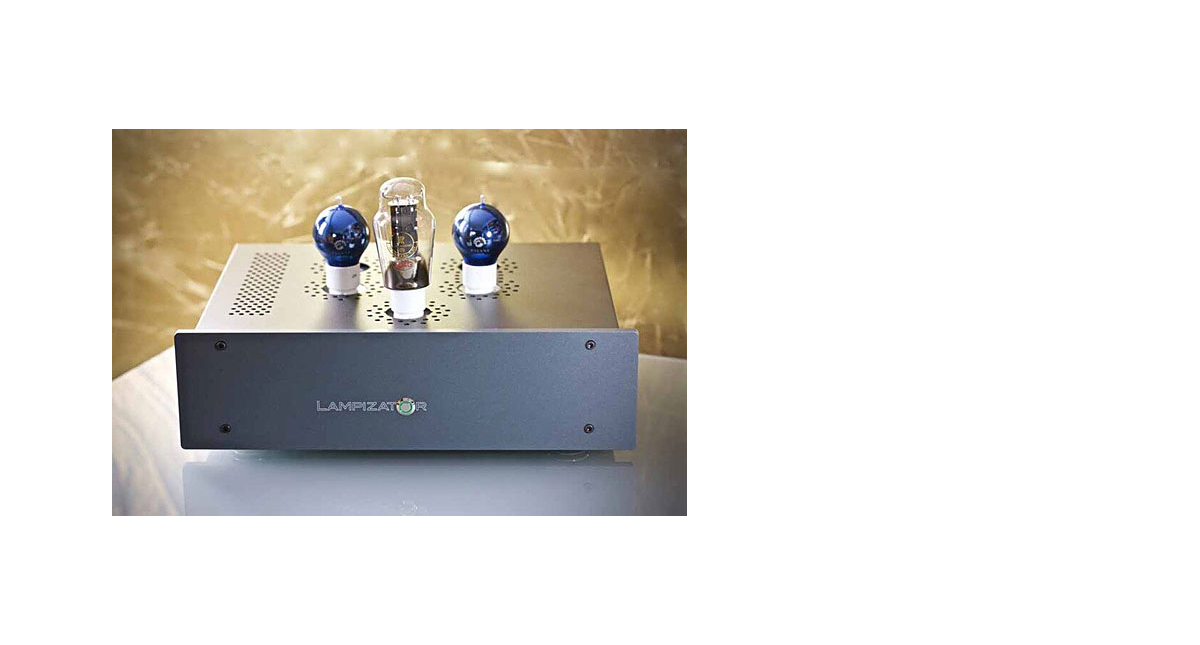






Leave a Reply
Want to join discussion?
Feel free to contribute!